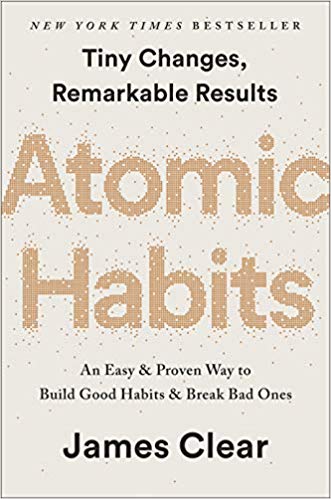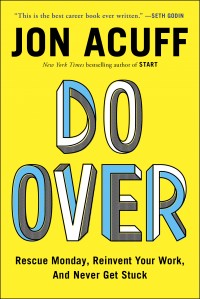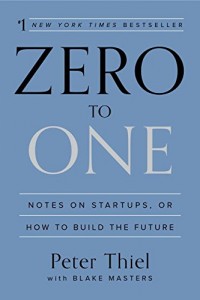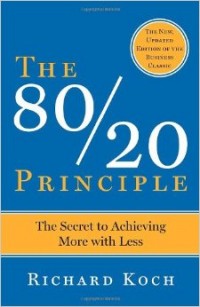Atomic Habits: An Easy & Proven Way to Build Good Habits & Break Bad Ones
by James Clear
About
Atomic Habits by James Clear is packed with powerful and practical advice on how to form good habits and break bad ones. In the book, Clear outlines the latest findings from various fields—including psychology, biology, and neuroscience—to create a simple and effective how-to guide for making good habits possible. “Habits are the compound interest of self improvement…” Prepare to yield massive returns.
Here’s what you’ll learn about in this summary:
- How to create good habits and eliminate bad ones
- How to get motivated
- How to design your environment for success and growth
Crucial quotes
”This is the meaning of the phrase atomic habits—a regular practice or routine that is not only small and easy to do but also the source of incredible power; a component of the system of compound growth.”
“Goals are good for setting a direction, but systems are best for making progress.”
“When nothing seems to help, I go and look at a stonecutter hammering away at his rock, perhaps a hundred times without as much as a crack showing in it. Yet at the hundred and first blow, it will split in two, and I know it was not that last blow that did it—but all that had gone before.”
Summary-in-a-sentence
Tiny persistent steps over time will breed powerful results. Forget the goal, focus on the process, make high-level changes.
Links + downloads
- Get Book: Print | Kindle | Audiobook
- Book Summary (PDF) Members only
Audiobook summary (🔓 Listen free for a limited time)
BIG IDEAS
- AIM TO GET 1% BETTER EVERY DAY
- FOCUS ON SYSTEMS, NOT GOALS
- CREATE A SUCCESS DRIVEN ENVIRONMENT
- ALL HABITS ARE BASED ON A FOUR-STEP SYSTEM: CUE, CRAVING, RESPONSE, AND REWARD
- THE FOUR LAWS OF BEHAVIOR CHANGE
- TRACK YOUR HABITS WITH A HABIT TRACKER
- USE THE TWO MINUTE RULE
- USE THE GOLDILOCKS RULE TO STAY MOTIVATED
- HABIT STACKING
- TEMPTATION BUNDLING
- SIMPLE WAYS TO FORM EFFECTIVE HABITS
1. AIM TO GET 1% BETTER EVERY DAY
“If you can get 1 percent better each day for one year, you’ll end up thirty-seven times better by the time you’re done. Conversely, if you get 1 percent worse each day for one year, you’ll decline nearly down to zero.”
Focus on making small improvements each day, over time those small improvements will equate to massive change. Bad habits also compound over time, if you delay working on something every day, the bad habit of procrastinating will multiply and seep into other areas of your life.
For example, you want to lose weight. Instead of focusing on losing 50 lbs, concentrate on working out for 30 minutes three times a week for 30 days. Over time you will begin to see changes in your body. Thirty minutes a day, three times a week for 52 weeks is 4680 minutes worth of exercise.
In the book, Clear tells a story about the British cycling team. Since 1908, British cyclists won only one gold medal at the Olympics, and in over a century, no British cyclist had ever won the Tour de France. In 2003, the team hired Dave Brailsford as their new coach/performance director.
Brailsford’s coaching strategy was an interesting one. His method was to push the team to get 1% better each day. He dug deep, searching for tiny improvements that could be made on a daily basis.
- They had the seats redesigned for extra comfort and stability
- They put rubbing alcohol on the tires for better grip
- They experimented with different racing suits for better aerodynamics
- They tested various massage gels for better muscle recovery
- They tested electrically heated shorts
The changes they made were tiny, but over time they made a significant impact. From 2007 to 2017, the British Cycling team won 178 world championships, 66 Olympic or Paralympic gold medals and they had 5 Tour de France wins.
In a nutshell, tiny improvements often appear small, but minute changes are transformational if you stick with it.
Actionable insight(s):
Set yourself a challenge to get 1% better each day for the next 30 days. If you want to improve your knowledge on a particular topic, for example, read five pages every day. Writing a book? Write five pages a day for the next 30 days. Pay attention to small action steps, make small changes and achieve more.
“All big things come from small beginnings. The seed of every habit is a single, tiny decision. But as that decision is repeated, a habit sprouts and grows stronger…”
2. FOCUS ON SYSTEMS, NOT GOALS
“If you want better results, then forget about setting goals. Focus on your system instead.”
The concept of focusing on systems instead of focusing on goals is a powerful one. There are a few problems associated with focusing on goals:
Winners and Losers Have The Same Goal: Every Olympic athlete has a goal of winning a gold medal. What sets you apart from your competitor is the daily habits that you cultivate to become a better athlete. Paying attention to small improvements daily is the most effective way of building momentum and achieving massive results.
Achieving A Goal Is A Short-Lived Change: You set yourself a goal to tidy your disorganized office desk. You spend hours doing this, and finally, it is done. The goal is achieved, but if you forget about the reasons why your desk got like this in the first place, the desk will eventually get messy again. However, if you set yourself the task of making small changes daily to ensure that your desk remains in an organized state, you are winning, you have made progress.
Goals Do Not Lead To Long Term Progress: “You do not rise to the level of your goals. You fall to the level of your systems.” When building effective daily systems, you create long term change. When you work on goals you focus on a particular achievement and return back to old habits once you have achieved the goal. However, when you create systems, long term habits, you move forward, you make high-level changes.
Actionable insight(s):
- Focus on your daily systems, the tiny action steps that you take each day to improve your life.
- Build daily habits like reading daily, drinking eight glasses of water daily and meditating daily. Analyze your systems, and work on making small changes every single day.
3. CREATE A SUCCESS DRIVEN ENVIRONMENT
“The most powerful of all human sensory abilities, however, is vision. The human body has about eleven million sensory receptors. Approximately ten million of those are dedicated to sight. Some experts estimate that half of the brain’s resources are used on vision.”
What you see around you can lead to a huge transformation. Your environment can either stifle you or propel you.
Clear emphasizes this big idea by highlighting a story about the energy crisis of the 1970s. Dutch researchers conducted a study. They observed energy usage in a small town near Amsterdam. Their findings revealed that some households were using 30 percent less energy than their neighbors. The results indicated that homeowners who kept their energy meters in the hallway used less power than those who kept their meters in the basement. Now, although it may not seem like it at first blush, this is actually great example of how powerful of a role your environment plays within your life…
How so? Simple: the people in the study with energy meters in their hallways used less energy because the meter was in their immediate purview—clearly visible in their environment—rather than hidden away in the basement.
Let’s take a quick look at a few more examples:
- You are less likely to practice your guitar if you have it hidden away at the back of your closet.
- You are less likely to take your vitamins if you hide them in your kitchen cabinet
- You are less likely to read that book you have been meaning to read if it is pushed to the back of your bookshelf.
- You are less likely to write that book if your notebooks, pens, and laptop are stashed away in a drawer.
Actionable insight(s):
![]()
This summary is for subscribers only…
Still not a member? Subscribe to start reading or listening to this book summary now.
Already a member? Log in here






